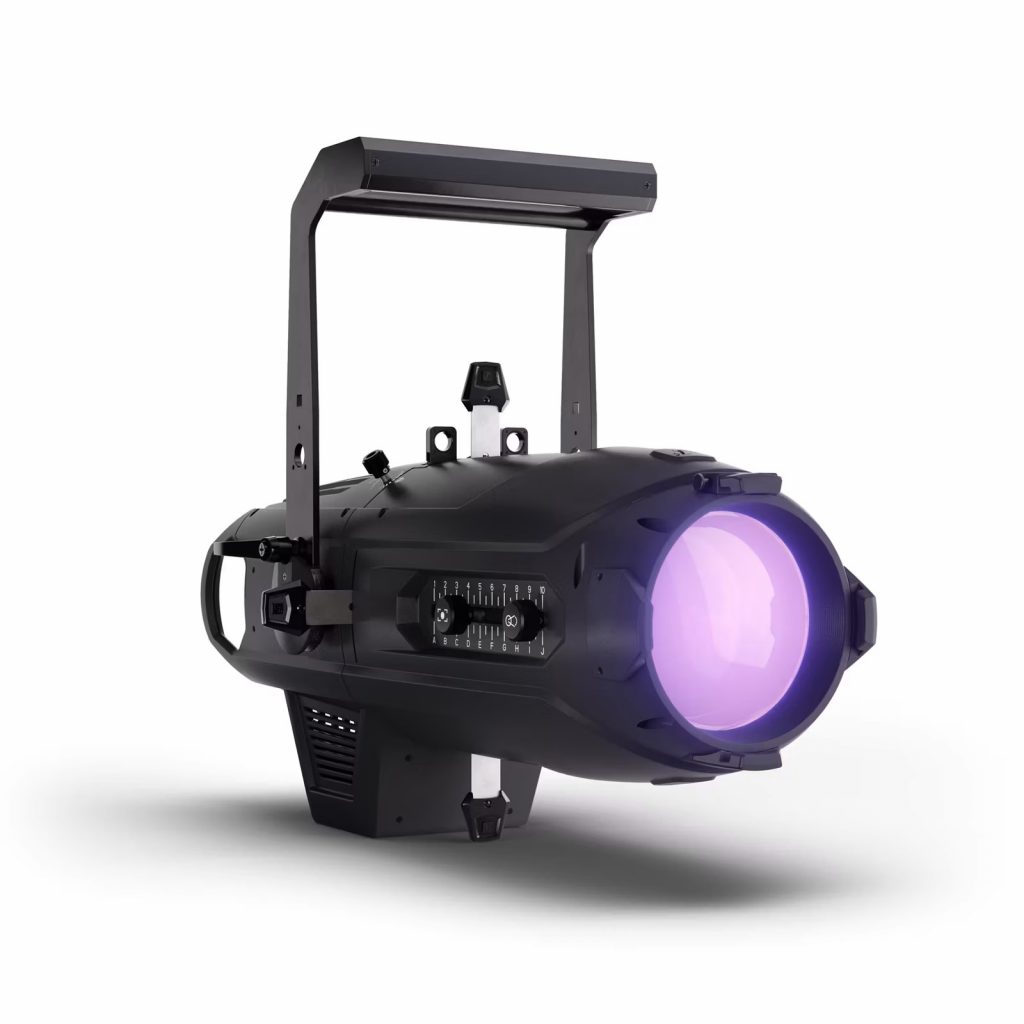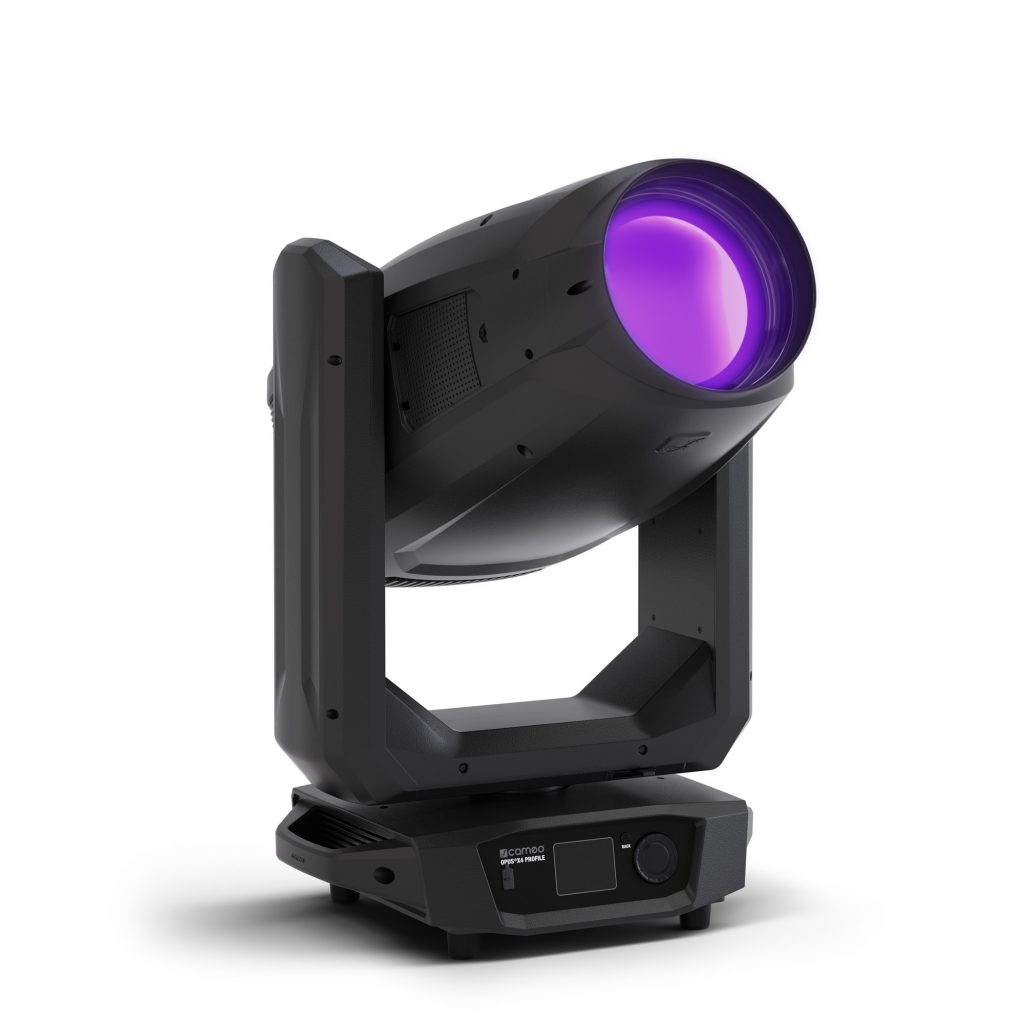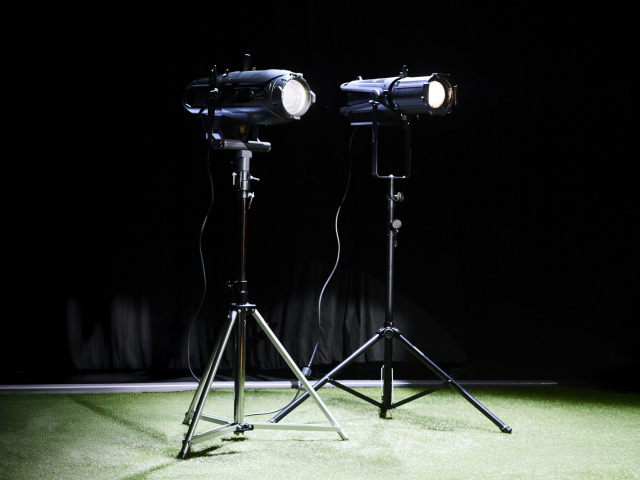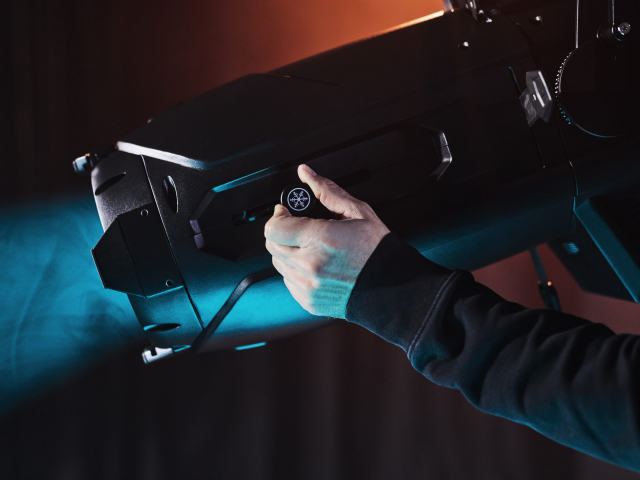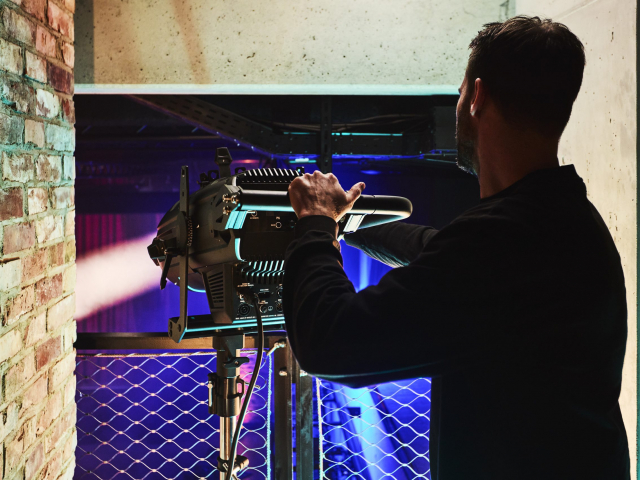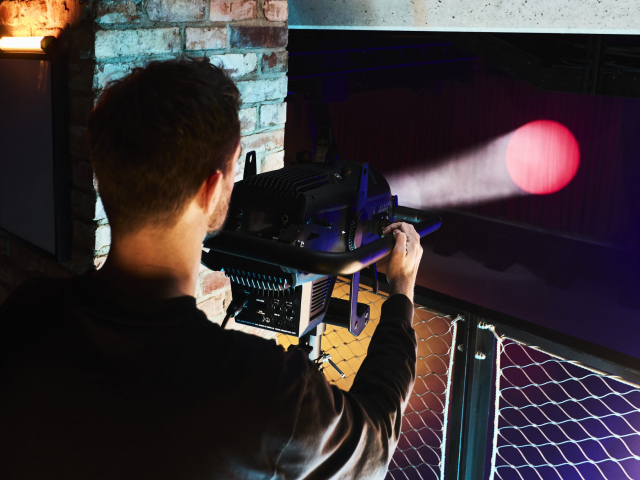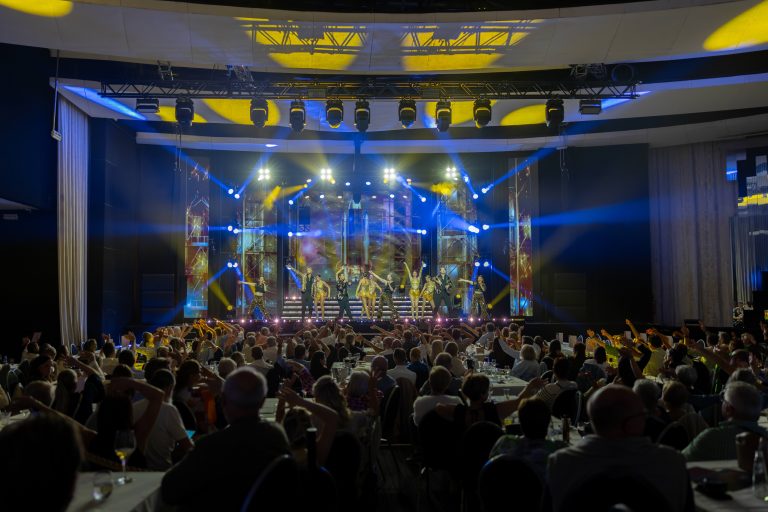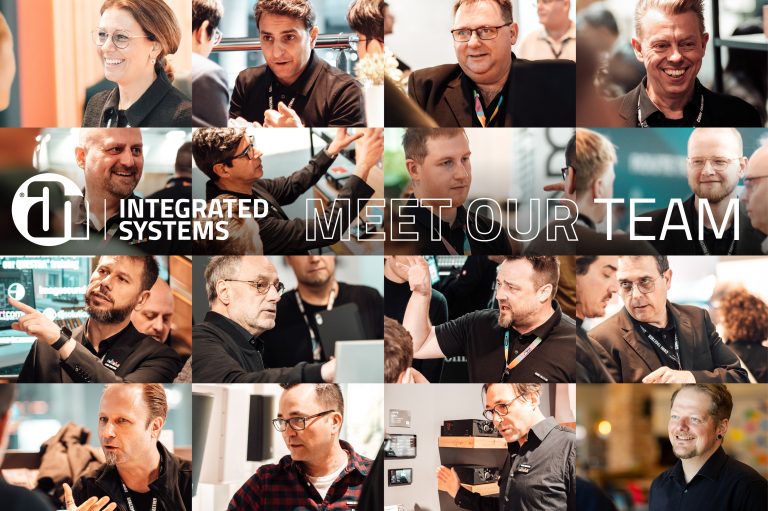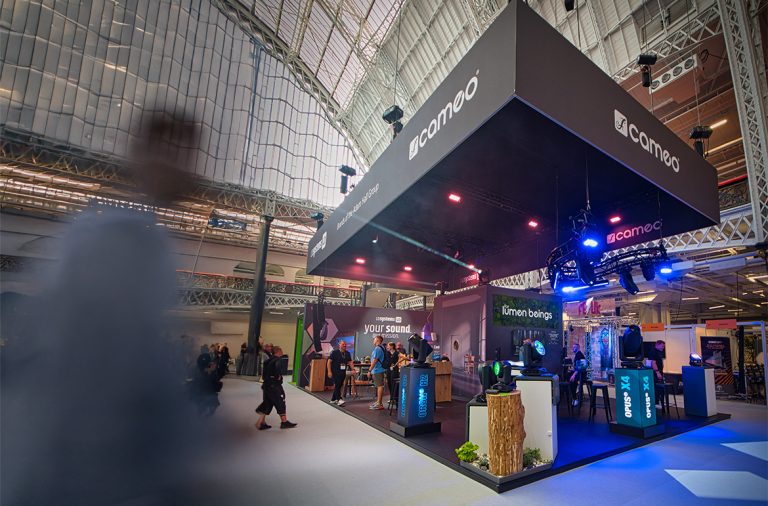Perfect light for every scene – Part 4: Flexibility or precision? A review of moving head and static profile spotlights
Moving heads or conventional profilers? This question is often raised when it comes to precise lighting design. In this final part of our series, we compare the two systems and shed light on when which option is worthwhile. How do moving head and static profile spotlights differ in terms of operation, precision, and workflow? When is a classic profile spotlight the better choice – and when is the flexibility of a moving head convincing? In addition, we’ll be looking at special applications, such as converting a profiler into a followspot. Whether it is for a theatre, trade fair, concert, or architectural lighting, here you can find out which system is best suited to your requirements.
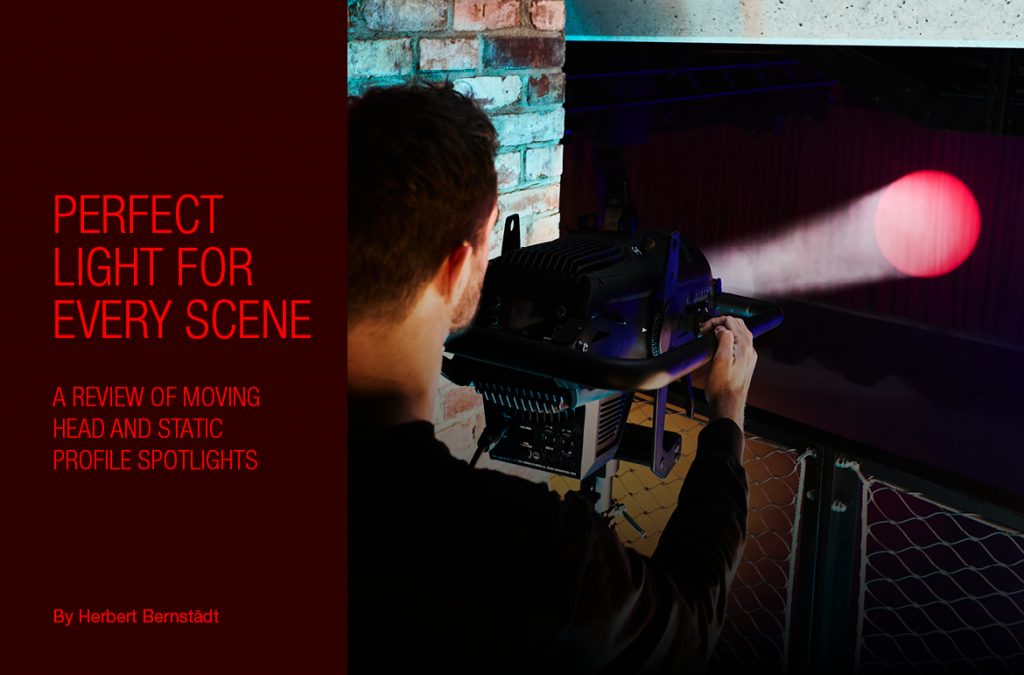
Moving head vers. Conventional
Profile moving heads have long been found everywhere, even in theatres. Nevertheless, the demand for conventional LED profile spotlights remains strong. Why is the specialist (conventional profile spotlight) often preferred to the all-rounder (moving head profiler)? Let’s embark on a quest for answers.
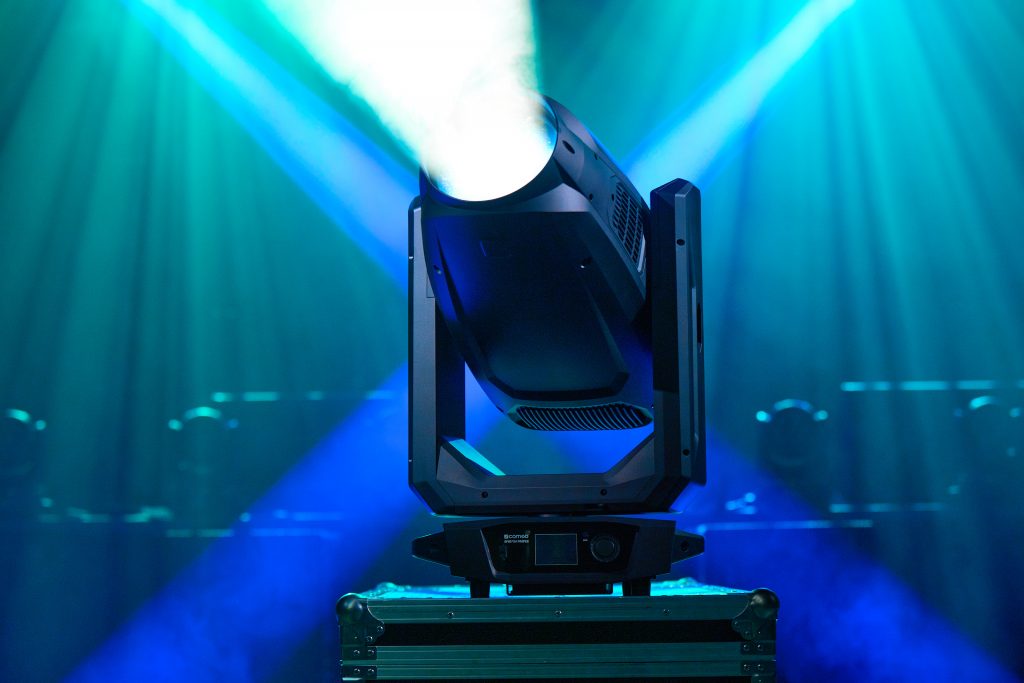
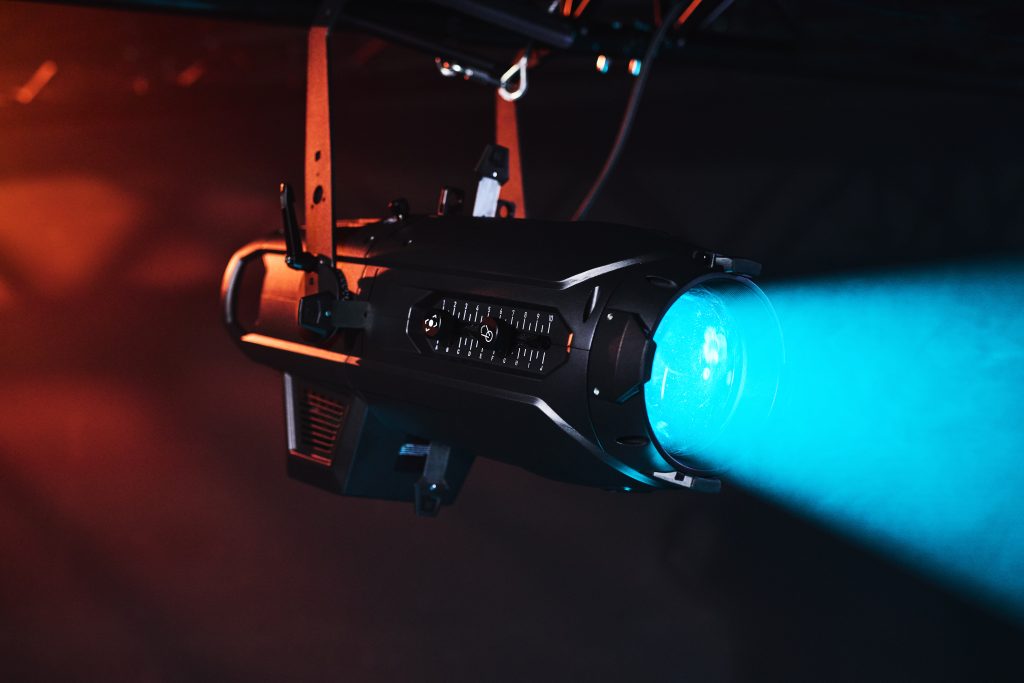
Of course, costs play a major role – why should you pay more for the additional functions of an all-rounder if you ultimately don’t use them? It makes sense to use a conventional profiler with a tube if only a special effect, such as projecting a logo, image, lettering such as “BREAK”, clouds, abstract backgrounds, and so on is required. Or when light has to be projected from one position to a certain distance – which is often required for musicals, theme parks, museums, or architainment, or for shows that do not change.
Next, the reset behaviour (the movement after switching on moving head spotlights) is often disruptive. There are already solutions available for this, such as absolute encoders, but they also drive up the costs. This is a bit like when noise is generated. In this case as well, fanless operating modes are available, which – if the light output is not to be reduced too much – also come at a steep price and, above all, a significant weight.
Weight is the next key term. In cases where the load capacity is limited, it makes a difference whether a bracket and base or just the spotlight with the bracket is being supported. Space requirements can also sway the decision in favour of a conventional profile spotlight, as its mechanical mounting means it can be easily placed on a tripod or positioned in narrow-aisle support structures or portal towers.
In addition to the many “mechanical” reasons, other reasons also play a role. This includes, for example, the use of existing large standard gobos in sizes A and B, especially when thinking of typical breakouts for a forest clearing, city silhouette, or cloud images. The established workflow of a theatre, particularly in the management of en-suite operations, also prefers working with conventional profile spotlights with the typical procedure: moving from spotlight to spotlight on the Z-bridge and manually adjusting them quickly and precisely from the perspective of the projected light. The light operator is often reserved for setting up or correcting. From the spotlight’s angle of view, It is often easier to push the lights away than to stand on the stage and give verbal instructions to the lighting operator. In addition, an experienced lighting technician can quickly adjust a spotlight by hand, which often takes much longer using a light control console.
However, a programmed set-up is advantageous for recurring set-ups and arrangements. Thus, it all depends on the application or workflow. As such, a fixed trade fair booth usually does not need to be modified, whereas television studios started using automated set arrangements very early on.
And another factor that is often underestimated is the operation by layperson or amateur users. This is particularly important for public venues used by clubs, such as community centres. The unique Cameo “Quicklight” function is very advantageous in this case: the light can be instantly controlled with a rotary encoder, even without a DMX signal. It’s so simple that you can easily show it to your club mates. Aligning and operating the shutter blades is purely mechanical in operation and intuitive, also making them ideal for beginners.
Taking everything into account, we recognize that the classic profile spotlight has its place, whether it is for precise manual operation or quick use on a tripod.
The profiler becomes the followspot
Followspots are similar in optical design to profile spotlights. Instead of being statically aligned once before the show, followspots have to be moved dynamically during the show and constantly adjusted to the new performance context. This means that a lighting technician continuously operates the spotlight. Compared to a profile spotlight, a followspot must feature operating characteristics that accommodate handling throughout the show. A conversion kit is available for the Cameo P6 LED profile spotlight to transition it from being mounted on a bracket to a hand-operated followspot. This provides an interesting option, particularly for smaller venues with a limited budget that only need a followspot on an occasional basis, rather than investing in a dedicated followspot that could sit unused in the cellar for years.
The Cameo P6 profile spotlight with conversion kit for use as a followspot.
Selection tip:
Classic theatre building design has double U-beams on the galleries and lighting bridges for mounting spotlights. Spotlights are usually mounted on this robust mounting platform using a DIN-standardized “headlight plate”. In order for the spotlight plate to be mounted on a spotlight bracket, the bracket requires a hole that corresponds to the standardized spotlight plate. Cameo has designed all spotlight brackets in the “Theatre spotlights” category with the appropriate hole configuration.
Conclusion
| Feature | Static Profile Spotlight | Profile Moving Head |
|---|---|---|
| Flexibility | Fixed projection, highly precise | Fully automated, repositionable |
| Installation | Lightweight, compact, tripod-compatible | Heavier, requires more space and stable mounting |
| Workflow Compatibility | Manual use, quick adjustments | Ideal for recurring, pre-programmed scenes |
| Noise / Reset | Fanless modes available, no reset issues | Reset behaviour and fan noise may be disruptive |
| Ease of Use | Intuitive – ideal for beginners, local groups & theatres | Requires experience or control via lighting console |
If you wish to creatively shape light and realize sophisticated lighting design, a profile spotlight is a must. It is the only way to achieve figurative to abstract projections and to thereby satisfy old, familiar viewing habits or to astonish with never-before-seen light imagery. Whether a universally applicable programmable moving head profile spotlight or a conventional “specialist” is used depends on the user’s workflow and target application. As such, all variants have their place and can be found in Cameo’s comprehensive product range.
Missed the previous parts? You can find them here:
Perfect light for every Scene: introduction to profile spotlights – Part 1
Perfect light for every scene – part 2: tube types and zoom technologies in detail
Perfect light for every scene – part 3: the perfect use of gobos, shutter blades, and irises
